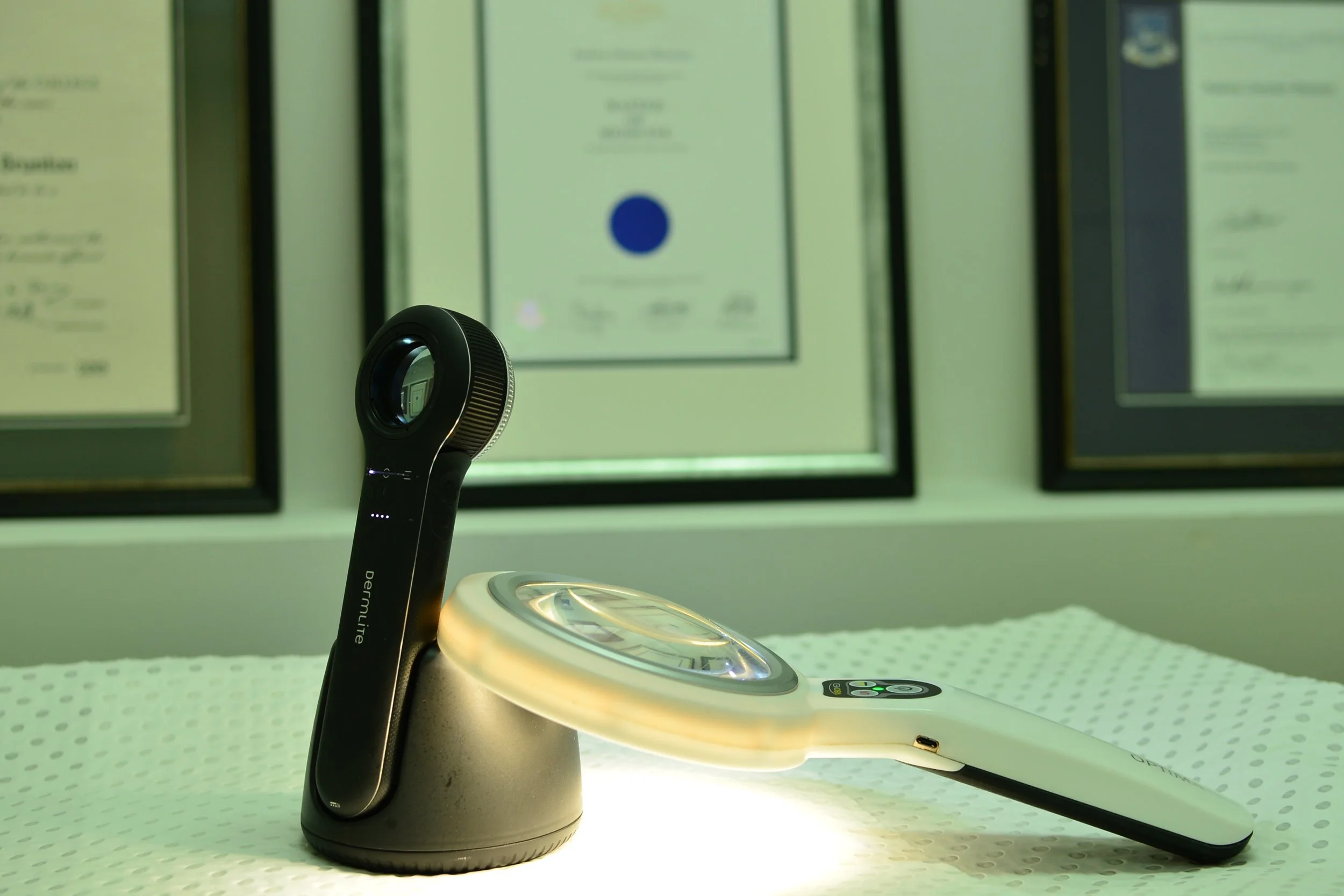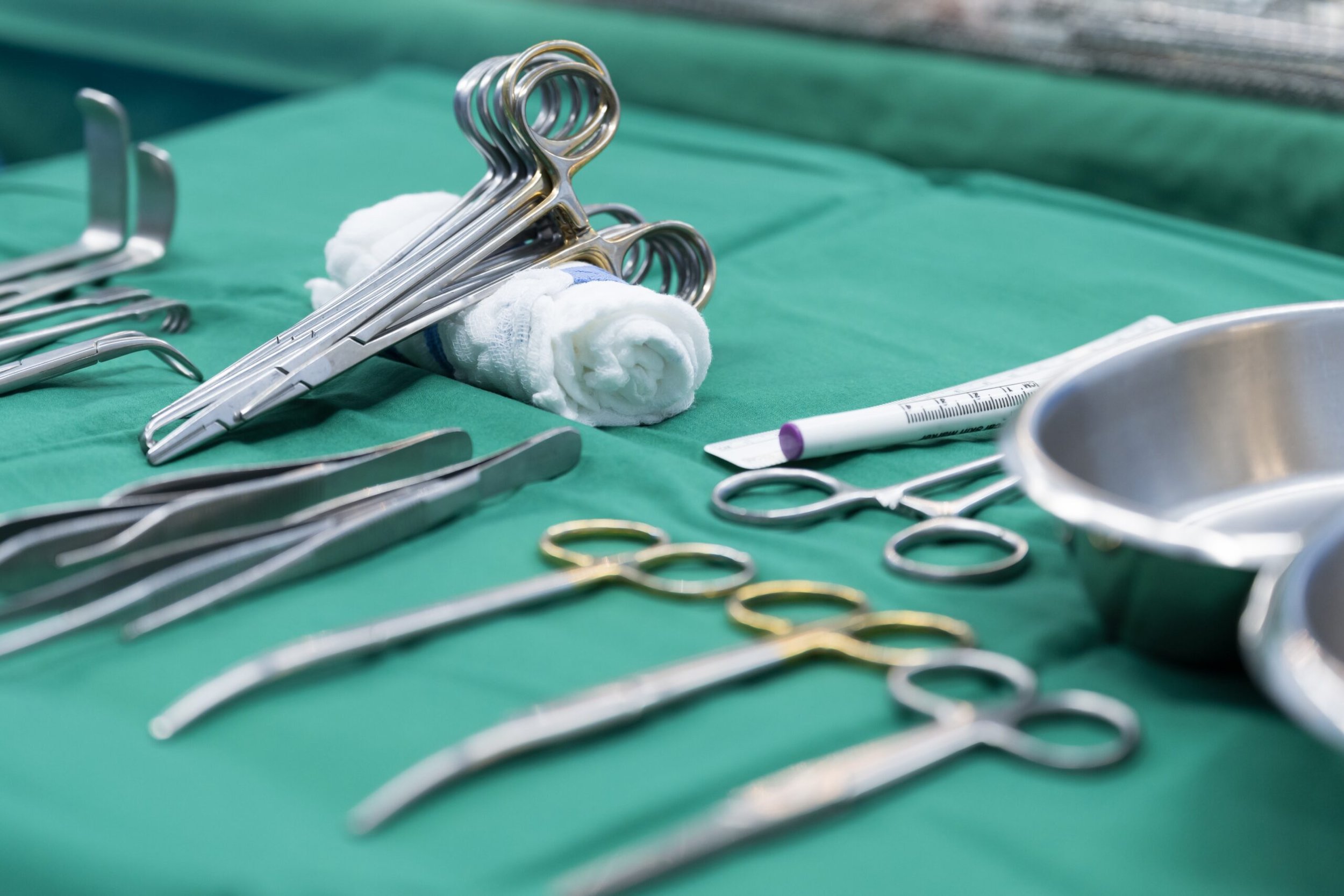
Comprehensive Skin Checks and Expert Skin Cancer Surgery .
Skin Cancer Examination
A skin check for skin cancers involves a thorough examination of your skin. During the check, the Dr Brunton will carefully inspect your entire body, including areas that are not typically exposed to the sun such as hands, feet, nails and scalp,, using a bright light and a dermatoscope—a specialized instrument that magnifies and illuminates the skin. Learning how to correctly use a dermatoscope and interpret the features of each lesion takes many years of study and experience. He will look for any suspicious moles, growths, or changes in existing skin lesions, such as alterations in size, shape, colour, or texture. If any irregularities are found, the Dr Brunton may take a biopsy, which involves removing a small sample of the skin for further analysis.
Before your skin check, you should prepare by wearing loose, comfortable clothing and remove any makeup that could obscure the examination. It’s helpful to make a note of any skin changes or concerns you’ve noticed, as this can guide Dr Brunton in his assessment. Regular skin checks are crucial for early detection of skin cancer, which can significantly improve treatment outcomes and prognosis. If you have a history of skin cancer or are at higher risk due to factors like excessive sun exposure or a family history of skin cancer, more frequent skin checks may be recommended.
Skin Cancer Surgery
Skin cancer surgery typically involves the removal of cancerous cells from the skin, often followed by reconstructive techniques to ensure the area heals well and maintains as much function and appearance as possible. The procedure generally starts with the administration of a local anesthetic to numb the area. Dr Brunton then excises the cancerous tissue, including a margin of healthy skin to ensure that all cancerous cells are removed.
After the cancerous tissue is removed, the wound is closed with sutures, which may be done in layers, depending on the size and location of the incision. In some cases, reconstructive surgery might be required to restore the area’s appearance and function, particularly if the skin cancer is extensive or located in a special site such as the nose or ears.
Reconstructive Surgery
Skin flaps are a surgical technique used to repair and reconstruct the skin after the removal of skin cancer. In this procedure, a section of healthy skin and underlying tissue is carefully lifted from its original location and repositioned to cover the area where cancerous cells were excised. This method is particularly useful for larger defects or when the cancer removal site is in a special location such as the ears, nose or lips. By utilizing skin from a nearby area, skin flaps help ensure a better match in texture and color with the surrounding skin, while also supporting quicker and more natural healing. This technique not only aids in restoring the skin's appearance and function but also reduces the risk of complications compared to other forms of reconstruction.
Skin grafts are a common and effective method used to cover areas where skin cancer has been removed, particularly when a large section of skin needs to be replaced. During this procedure, a healthy patch of skin is taken from one part of the body, known as the donor site, and transplanted to the area where the cancerous tissue was excised. Skin grafts are ideal for covering wounds that are too large to heal naturally or where adjacent tissue might not be suitable for repair. The grafts can be either full-thickness, which includes all layers of the skin, or split-thickness, which includes only part of the skin layers. This technique promotes efficient healing and helps achieve a smoother, more aesthetically pleasing result

